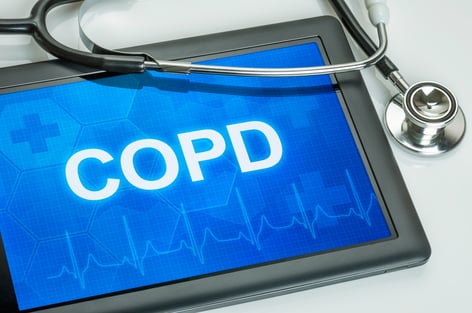
Chronic obstructive pulmonary disease (COPD) encompasses a group of diseases that limit airflow in the lungs. Two of the most prevalent are chronic bronchitis and emphysema. COPD is a progressive disease and affects millions of people. It is currently the third leading cause of death worldwide. As of today, there is no cure for COPD but, with early detection, a lot can be done to improve quality of life, and slow the progression of the disease.
You May be At Risk for COPD if:
- You’re a current or former smoker
- You carry Alpha-1 and are genetically predisposed to it
- Have had chronic asthma
- Been exposed to chemical fumes, dust, pollution, or workplace lung irritants
Symptoms of COPD appear innocuous at first but please don’t ignore any of these
- Shortness of breath
- Chest tightness
- Chronic cough producing mucus that may be clear, white, yellowish or greenish
COPD can coincide with other illnesses and conditions as well, such as:
- High blood pressure
- Chronic respiratory infections
- Heart problems
- Depression
- Sleep apnea
What Should I do if I’m Worried About my Breathing?
Please see your doctor right away! Your physician will likely order a screening to determine if you have the disease, the level of severity, and what treatment avenues to explore.
There are several types of screenings available to evaluate your lung function, such as:
Spirometry
Spirometry is the most common type of screening that can likely be done in your doctor’s office. Spirometry is basically a test to measure the power and rate that air is expelled from your lungs. It is performed by clipping your nose and being asked to breathe into a mouthpiece for a specified period. If air is being expelled slower, this is an indication of a chronic airway obstruction. The doctor will be able to analyze the results immediately.
Arterial Blood Gas Analysis
CT Scan
A CT scan is a comprehensive radiologic look inside the lungs. A contrast dye will be
Chest X-Ray
A chest x-ray takes a picture of the respiratory system. Using this method COPD can be easily detected while other problems such as heart failure can be ruled out. Chest x-rays can also reveal if there are any cysts or spots on the lungs which may be indicative of cancer, idiopathic pulmonary fibrosis (IPF), or interstitial lung disease (ILD).
Plethysmography
Don’t Ignore Symptoms
Getting diagnosed with a serious disease can be scary so sometimes people ignore their symptoms or put off going to the doctor. Don't put it off, catching any disease early increses effectiveness of treatment.
What if I don’t have COPD?
If you go for a screening and are not diagnosed with COPD, its alright to breathe a sigh of relief but do not ignore the fact that you were having breathing troubles or exhibiting symptoms.
- Follow your doctor’s recommendations if further tests are ordered
- Please quit smoking if you haven’t already
- Educate yourself about a heart and lung healthy diet
- Ask your physician about an aerobic exercise program to boost respiratory function
- If the doctor indicated that your weight might be a problem, make necessary lifestyle and dietary changes

